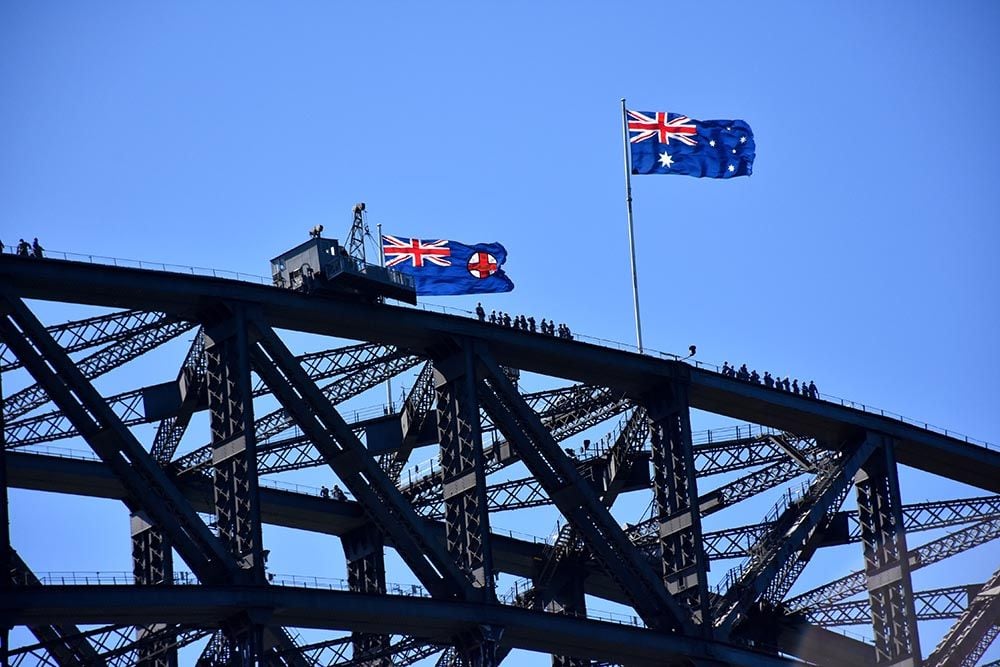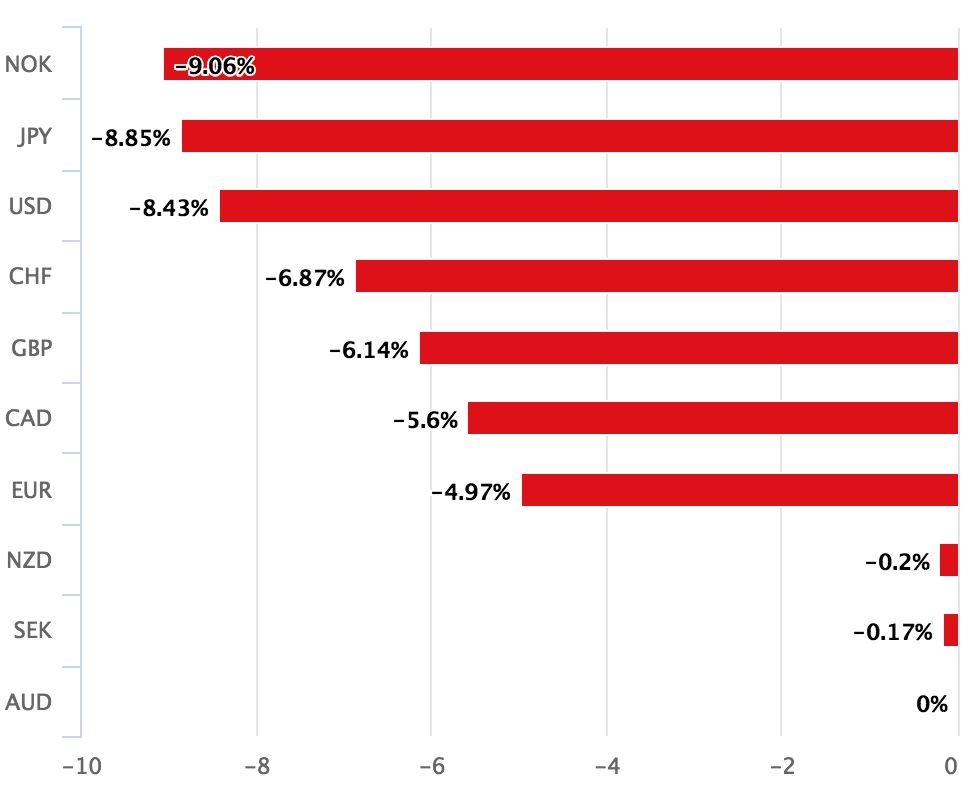NAB see Australian Dollar Stabilising in Latest Forecast Update
- Written by: James Skinner

Image © Desiree Caplas, Adobe Stock
- NAB release latest set of Aussie Dollar forecasts
- AUD set for period of stability as "real money" supports currency.
- Likely means AUD will not sustain any break below 0.71 for very long.
The Australian Dollar should stabilise over coming weeks as much of the relevant bad news is now in the price of the currency, while an anticipated uptick in hedging activity among asset managers is also likely to support the Antipodean, according to National Australia Bank (NAB).
NAB, one of Australia's largest lenders, has made its call just as the Australian Dollar sits at the bottom of the G10 currency league table for 2018.
Stability will be good news for under-fire Australian importers while those looking to convert domestic currency into Aussie Dollars might not see their exchange rate get any better from here, if NAB is right.

However, the risk-sensitive Aussie Dollar held relatively steady last week when global stock markets suffered their worst rout since February, which came in response to another leg higher in U.S. bond yields.
Although the Dow, Nikkei 225 and Shanghai Composite indices all fell close to 5% last Wednesday, the Antipodean was relatively unmoved and actually closed on Friday without having seen incurred any loss for the week overall.
This could be evidence the "bad news is in the price", according to the currency team at NAB, because the Aussie's status as a proxy for investor risk appetite should have seen the currency decline alongside the world's stock markets.
"Price action last week, in the midst of the sharp sell-off in US stocks and corresponding spike in the VIX to above its long run average, was instructive. It reinforces our view that sub-70 levels on AUD/USD will not be easily achieved – or if they are, readily sustained," says Ray Attrill, head of FX strategy at NAB.
With the Aussie close to three year lows against the U.S. Dollar, Attrill says exporters who normally buy the Antipodean after receiving payments in foreign currencies may be lured into the market over coming weeks in order to take advantage of favourable rates.
"From a flows perspective, we envisage that exporters will look to take advantage of any event-driven dip to or below 0.70 to undertake longer dated hedging. At the same time, asset managers will likely be looking to increase hedge ratios at those sorts of levels," Attrill writes, in NAB's latest review of currency markets.
Asset managers who invest overseas but must eventually repatriate their portfolios back into Aussie Dollars may also provide some support too.
They are likely to want to protect themselves against a recovery in the value of the Australian currency, which would eat into portfolio returns if preparations are not made.
Typically, an Australian investor would bet on a rise in the AUD/USD rate (buy the Australian Dollar) in order to hedge the foreign currency risk of holding US Dollar assets.
The investor would gain on the hedge trade if the Antipodean rises over the period but would see a decline in the Australian Dollar value of its foreign investment portfolio at the same time.
The net effect the currency movement has on returns would be neutralised by hedging but without it, investors would give up some of their profits because they would not be able to buy back as many Australian Dollars after AUD/USD rate rises.
"The latter will in any event be natural AUD/USD buyers this month in order to rebalance hedge books, assuming that this month’s fall in international equity prices is sustained and which would leave them over-hedged versus benchmarks," Attrill says.
NAB's call comes after the Australian Dollar hit its lowest level since February 2016 earlier in October, taking its 2018 losses above the 9% threshold, following another leg higher by U.S. bond yields that merely served to widen the already problematic gap between market interest rates in the two relevant countries.
Rising U.S. bond yields have not only risked turning the tide of international capital flows away from the Australian Dollar because they've also put upward pressure on borrowing costs in Australia and other countries further afield, delivering a tightening of monetary policy despite that the Reserve Bank of Australia is still sitting on its hands.
In other words, developments in U.S. bond markets have hurt the Australian Dollar because they may have just kicked the date at which the RBA becomes willing to entertain an interest rate rise even further into the future, creating an even more adverse outlook for relative interest rates.
The AUD/USD rate was quoted 0.16% higher at 0.7146 Tuesday but is currently down 8.4% for 2018 while the Pound-to-Australian-Dollar rate was 0.41% higher at 1.8509 but has risen 7.2% this year.
NAB are forecasting the AUD/USD exchange rate to be at 0.71 by year-end and 0.72 by March 2019, before rising to 0.73 by mid-2019 and finishing 2019 at 0.75.
The GBP/AUD exchange rate is forecast to trade at 1.7857 by end-2018, suggesting downside from current spot levels. In fact NAB analysts are maintaining this forecast throughout 2019, ahead of a rise to 1.85 by year-end.
Advertisement
Get up to 5% more foreign exchange by using a specialist provider to get closer to the real market rate and avoid the gaping spreads charged by your bank when providing currency. Learn more here




